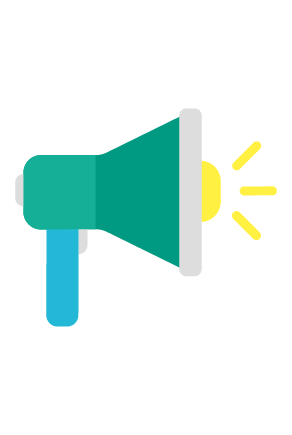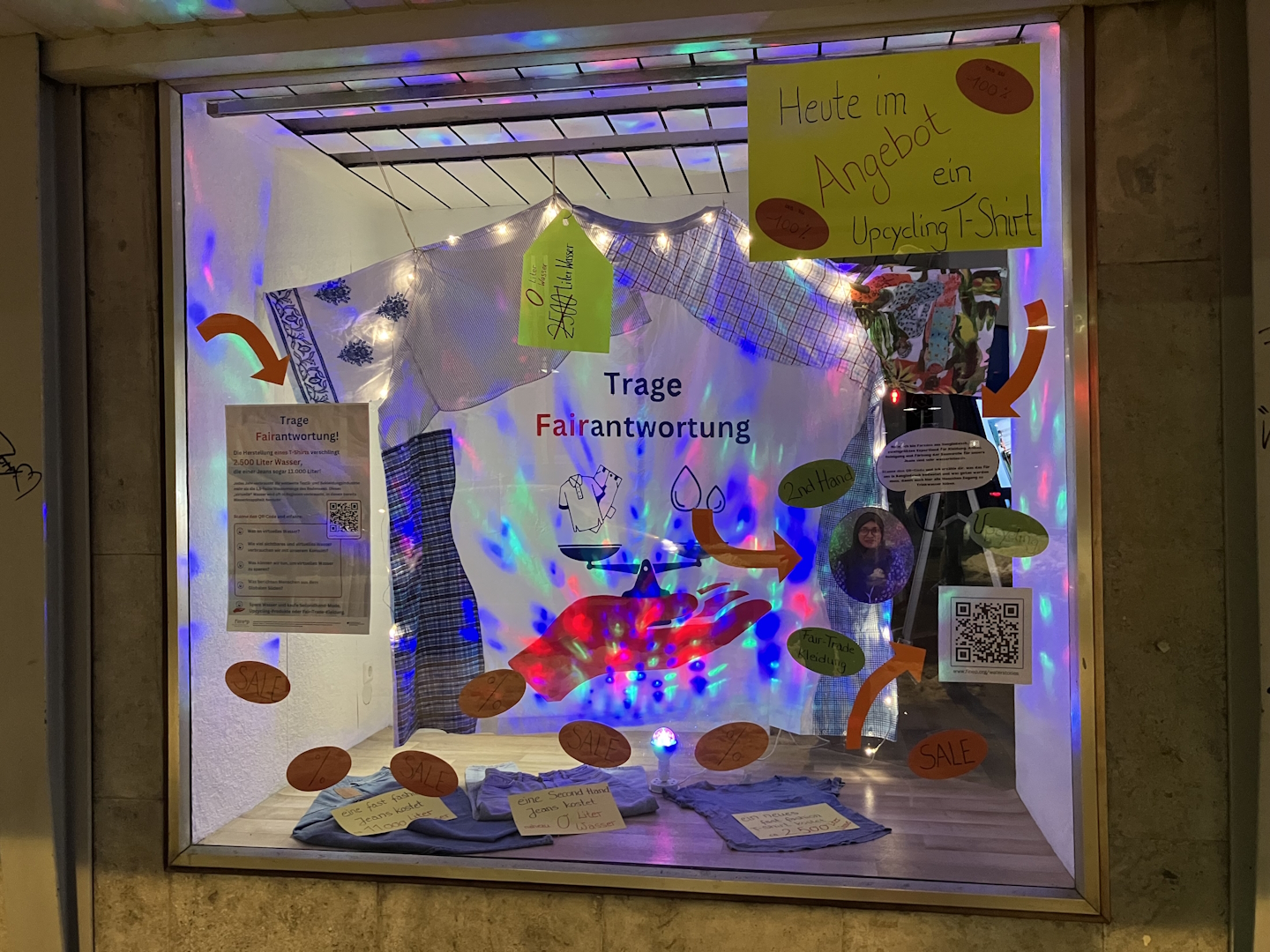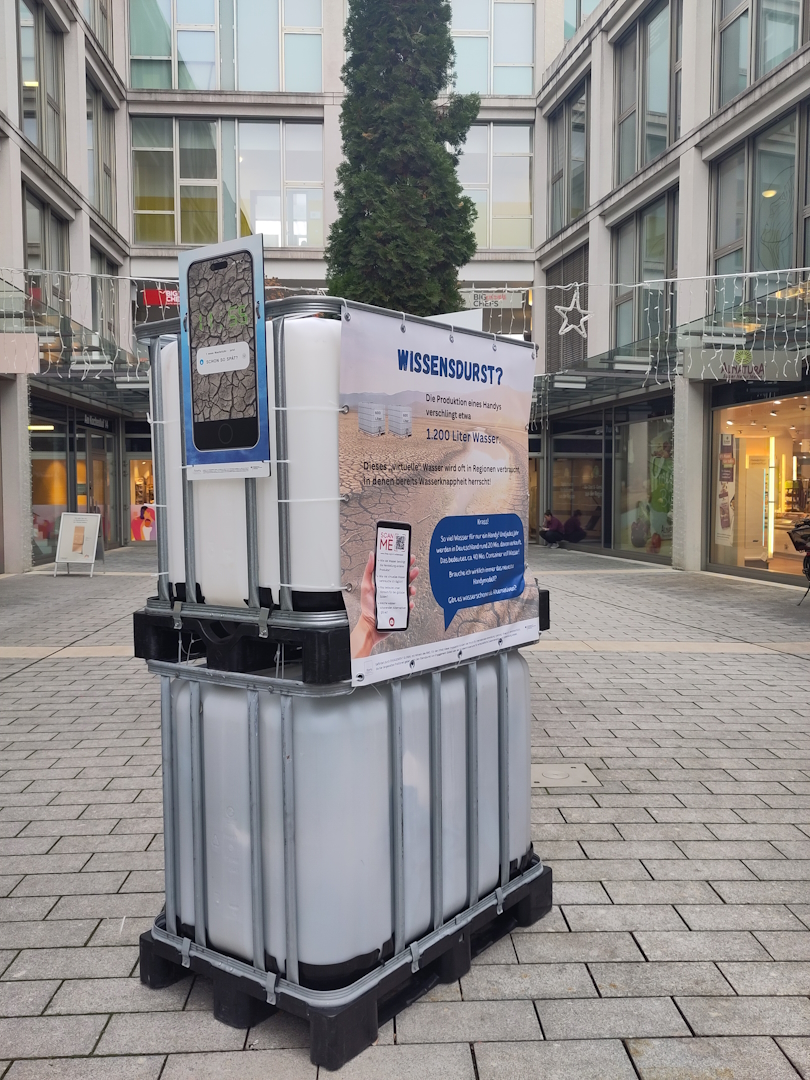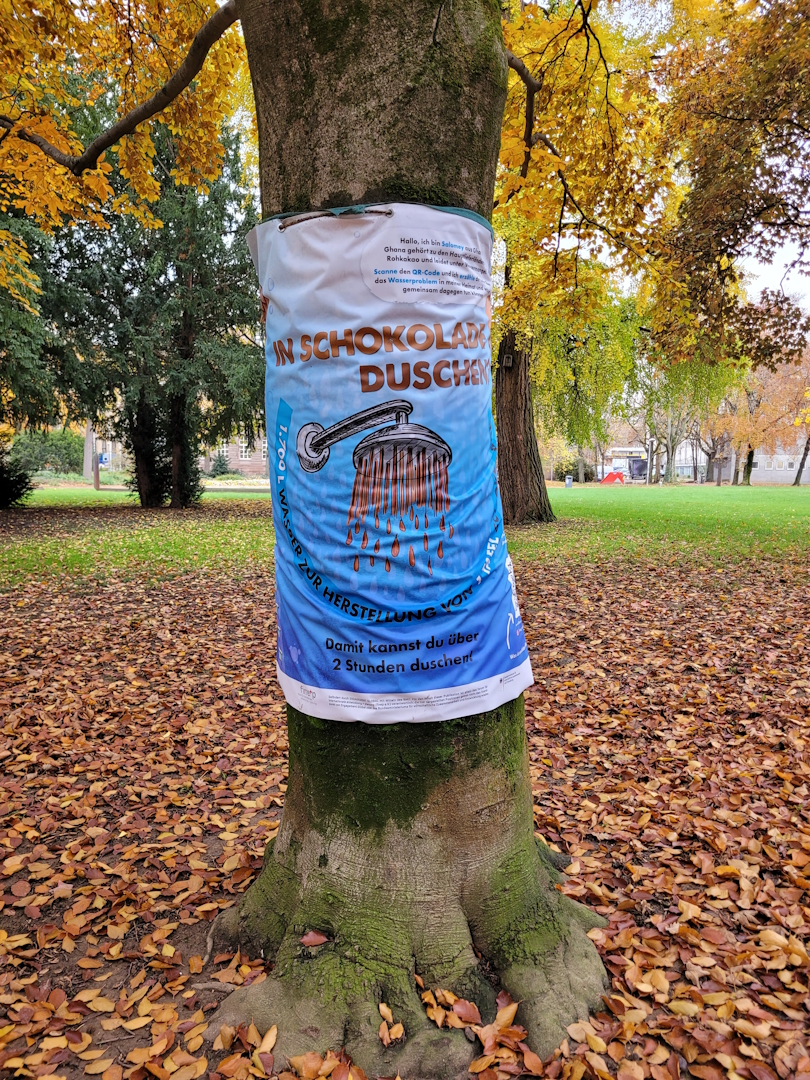Educational program focuses on virtual water
Konsum
A few days ago, we received a message from Katrin, who is involved in the "forum for international development + planning (finep)". They have completed the "Virtual Water in Focus" project and would like to pass on the results and lessons learned to as many development actors as possible throughout Germany for their own educational work.
What is the project about?
How can we make virtual water visible on a broad scale and also reach those who have little contact with development education formats? This is the core topic of finep's "Virtual water in the spotlight" project. Virtual water is water that is used for the cultivation, production and transportation of goods. While direct water consumption in Germany is around 130 liters per person per day, each person in Germany consumes around 5,000 liters of virtual water.
Aim of the project:
finep aims to raise awareness among as many people as possible, at the lowest possible cost, about the connection between their consumer behavior and the scarcity of water for people in the Global South and to encourage them to take alternative action. To this end, innovative educational installations are being developed and tested. The learning experiences are to be passed on to other organizations in the field of development education throughout Germany by means of manuals and training, so that the general public throughout Germany can be reached in the long term.
Who is the target group?
The project is aimed in particular at people who have had little contact with development education and have not been reached by conventional educational formats on the topic of virtual water. The focus here is primarily on young adults.
Innovative educational installations:
As part of the project, innovative and broadly effective educational installations, so-called casual learning tools, are being developed that have a strong visual appeal and are set up in highly visible everyday locations. The integration of educational messages into everyday situations encourages the target audience to engage with the topic on their own initiative. Viewers can find further information on each installation using a QR code that leads to the project website.
A total of five tree trunks were wrapped in banners for the "Clothed tree trunks" installation in the Stadtgarten Stuttgart and on the market square in Leinfelden-Echterdingen. The blue background looks like a column of water even from a distance and is intended to entice people to take a closer look at the trees. With humorous slogans, vivid images and an unusual location for development education, walkers are made aware of the issue.
Two 600-litre water containers visualize the amount of water needed to produce a cell phone. This installation was set up in the Killesberghöhe Stadtquartier shopping center in Stuttgart. Due to its size, it attracts people passing by and attracts attention.
The "Puzzle Table" installation is located in the Kö8 shopping center in Köngen. It is a table with rotating plates on which food is displayed. Using quiz questions, it encourages people to turn the plates and find out how much water is needed to produce the food depicted. An exciting illustration of an iceberg also expands the perception of our water consumption: the tip of the iceberg represents the directly visible consumption, while the iceberg lying under water shows the invisible, virtual water consumption using examples of consumer goods.
The House of Sustainability in Neu-Ulm has provided a shop window for our T-shirt installation "Wassershirt". Here, people walking past discover an approx. 2x2 meter upcycled T-shirt made from fabric remnants, which draws attention to the enormous water consumption of the textile industry. The shop window has an eye-catching and colorful design and advertises the fact that second-hand fashion, among other things, does not consume any (additional) water and is therefore "free".
Dissemination, consolidation and further development of the project approach:
The educational installations developed in the project are designed to be imitated by other development actors with relatively small budgets. By developing tried-and-tested methods, high-quality materials and enriching learning experiences, these are intended to serve as examples of best practice. They are communicated through targeted training and a handbook aimed at multipliers. In this way, the know-how developed is shared widely, development policy content reaches the general public and new ways and methods are created to open up various target groups to the topic of virtual water.
The offer from finep:
If you are interested in their free handbook for your own educational work, simply contact Katrin at katrin.pfeiffer@finep.org.
For more information on similar innovative approaches to development education, please visit the following website: http: //labor-entwicklungspolitik.de/.



